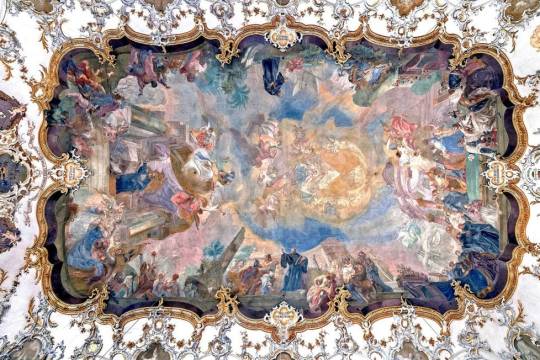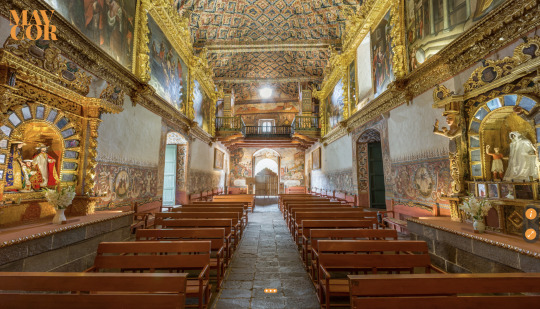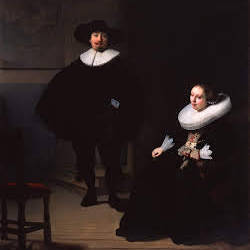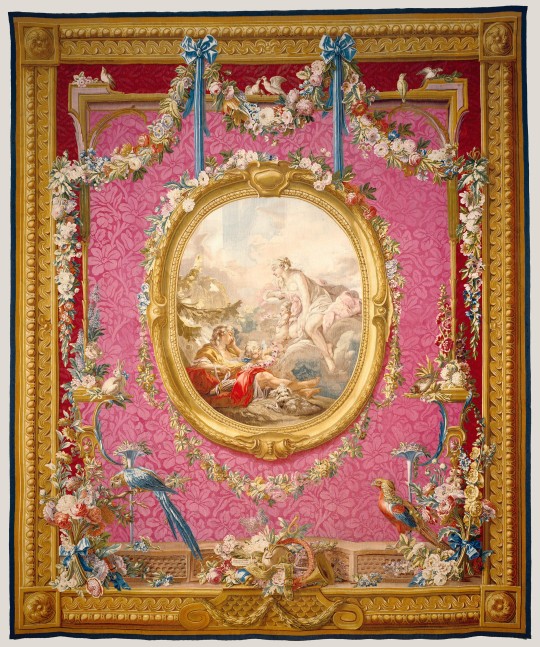#Johann Baptist Enderle
Text
Wealth & Status in Baroque and Rococo
Having it all must be tough :(
There are never ending decisions to make, about silly things like ideal garden shrubbery height, drapery thread count, ornate frames, silver, or gold? To show it all off or to cover it up? To spend or to save? To invest in the Church or one's own extravagant lifestyle? Virtuous piety or worldly comforts?
To nurture Faith or Ego?

Ceiling painted by Johann Baptist Enderle, 1772

Jean-François de Troy, The Declaration of Love (1731)
All these competing ideals are exactly what set the Baroque and Rococo periods apart.
Let's start at the beginning - well, sort of - with Baroque.

Artemisia Gentileschi, Judith and Holofernes 1612-13
Throughout Europe Catholicism sees a decline in followers going into the 17th century, due to popularization of Marin Luther's Protestant reformation.
Protestantism came as a response to shady behavior within the Catholic Church, which had previously held unchallenged cultural and political power. This 'divine' power within the Church attracted wealth, and wealthy people looking to buy in.

I cannot stress enough how motivated by money the Catholic Church was at this time. Many Popes like Leo X actually sold physical certificates called 'indulgences' which were essentially Fast-passes through Purgatory, should its keeper die before confessing their sins in penance.
Through generous donations to the Catholic Church, one could actually buy themselves a ticket into heaven, circa ~ 1550.
This wasn't great optics to German monk, and founder of Protestantism, Martin Luther. And many people agreed, causing a novel decline in Catholicism. The Roman Catholic Church desperately needed a rebrand.

Caravaggio [?] , The Crowning with Thorns, 1603
Baroque paints Catholicism in a more virtuous, penitent, moody, and modest light. Visual elements like high contrast light and shadows, mostly religious imagery, "normal" looking figures that no longer strive to be the Renaissance's perfect man, nor Rococo's dashing picture of youth and indulgence, they look like us.
It's hard to say if the Baroque art movement really saved the Church from losing followers, but it did spark a global popularization of Baroque and is responsible for subsequent movements in fine art and architecture across the world!
ie. the global Baroque, Rococo, heavy influences on the Dutch golden age of painting.

Church of St. Peter of Andahuaylillas - Peru, 1620s


Rembrant, Lady and Gentleman in Black and Christ in the Storm on the Sea of Galilee, 1633, Dutch [missing from ISG Museum since 1990]

Jean-Honoré Fragonard, The Progress of Love: Love Letters, 1771-72, French
In the century to follow, Baroque artwork would become a status symbol in itself, along with its pious and devout lifestyle.
French aristocrats and artists like Fragonard coming into the 18th century rejected this ideology, along with King Louis XIV's frugal, somewhat Baroque style of ruling. Rococo takes clear visual elements of Baroque and applies them to a generally more frivolous, lighthearted, romantic subject matter, with clear emphasis on material wealth.
Wealth was shown and represented in excess, lifestyles full of lush scenery and architecture like Versailles. Material goods and conspicuous consumption ruled the aristocratic nobility (art buying community) at the time.
In the Rococo period once again, in Renaissance fashion, art patrons are shifting toward a search for aesthetic perfection, beauty, and divinity in humans and on earth.
A harsh contrast from a hundred years prior, in the midsts of Baroque's influence of frugality, devotion to faith, and denouncement of worldly comforts. This shift could have many catalysts, including the continuing spread of Protestant religions, or the rebellion against a previously strict, sometimes oppressive, religious church-state under the reign of Louis XIV.

Tapestry L'Aurore et Céphale, from Les Tentures de François Boucher Series, Painted by Francois Boucher, 1776-77, French

The Studio, Honoré Daumier, 1870, French
Ultimately, today the Rococo period is iconic in reference to the French Revolution.
Similarly to Rococo's start, as a rebellion against a meek and mild social norm, Rococo's end is tied to the death of the French noble class; at the hands of French citizens who were facing the consequences (famine, poverty, poor living conditions) of the French Nobility's over-indulgent, expensive lifestyle.
I can only assume that after the torches, pitchforks, and guillotining of the French Monarchy, Rococo's frills and embellishments probably seemed pretty... cringe.

Portrait of the Marquise de Pompadour by Maurice Quentin de La Tour, 1755 (Rococo)

The Execution of Louis XVI by H. de la Charlerie, 1793 (Neo-classical)

The Death of Marat, Jacques-Louis David, 1793 (Neo-classical)
#art history#art#neo classical#baroque#global baroque#18th century art#17th century art#rococo#french revolution#renaissance#1800s#1700s#1700s fashion#1800s fashion#17th century#18th century#isabella stewart gardner museum#art theft#stolen art#classical art#classical paintings#architecture#religious art#religious architecture
5 notes
·
View notes
Video
Mainz, Augustinerkirche by Karl Stanglahner
Via Flickr:
Das Deckengemälde von Johann Baptsist Enderle zeigt die Wirksamkeit des hl. Augustinus dargestellt in 4 Szenen + seine Aufnahme in den Himmel. Das Chorgemälde stellt die Taufe des hl. Augustinus durch den Bischof von Mailand (Ambrosius) dar. Die Restauration der Deckengemälde im letzten Jahrzehnt hat die Farbigkeit wieder verbessert. Wer für die Stuckaturen zuständig war ist bisher aus den bekannten Unterlagen noch nicht hervorgegangen.
#Mainz#Augustinerkirche#Deckenfresko#Gewölbedecke#Kirche#church#ceiling#Malerei#Freskomalerei#Johann Baptist Enderle
0 notes